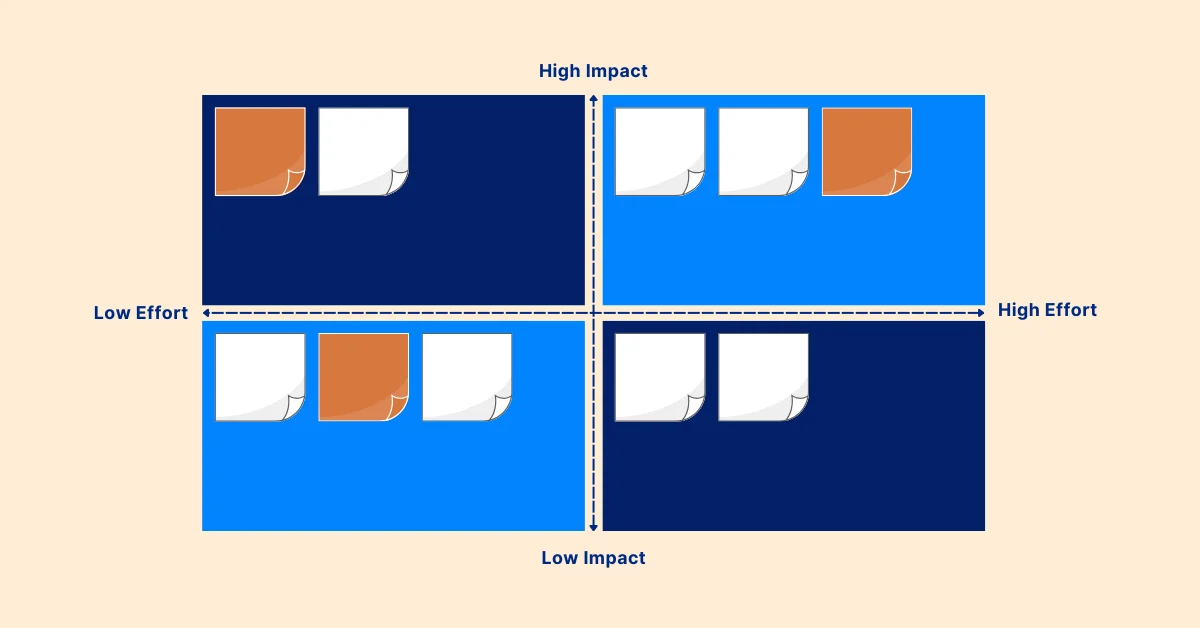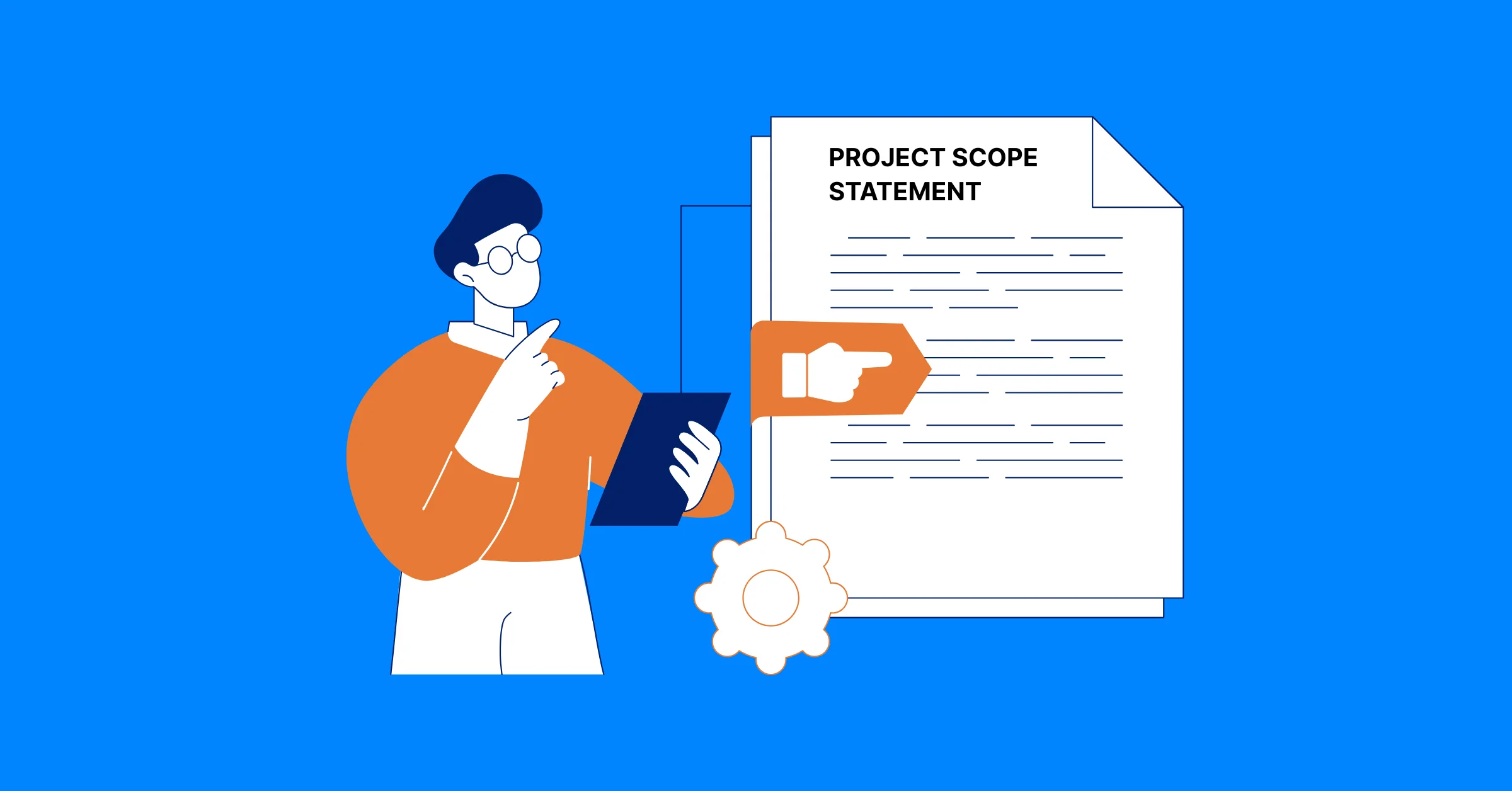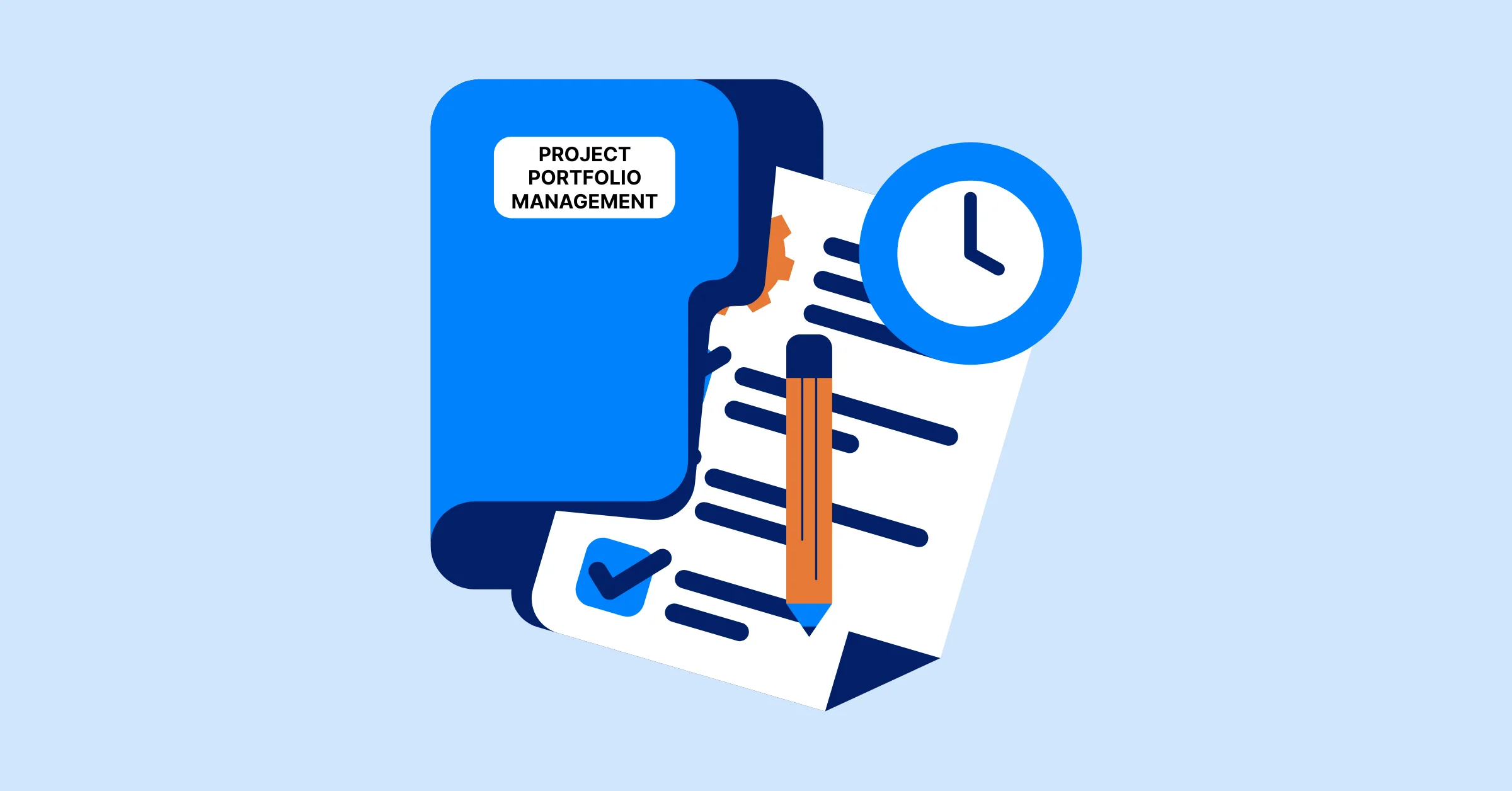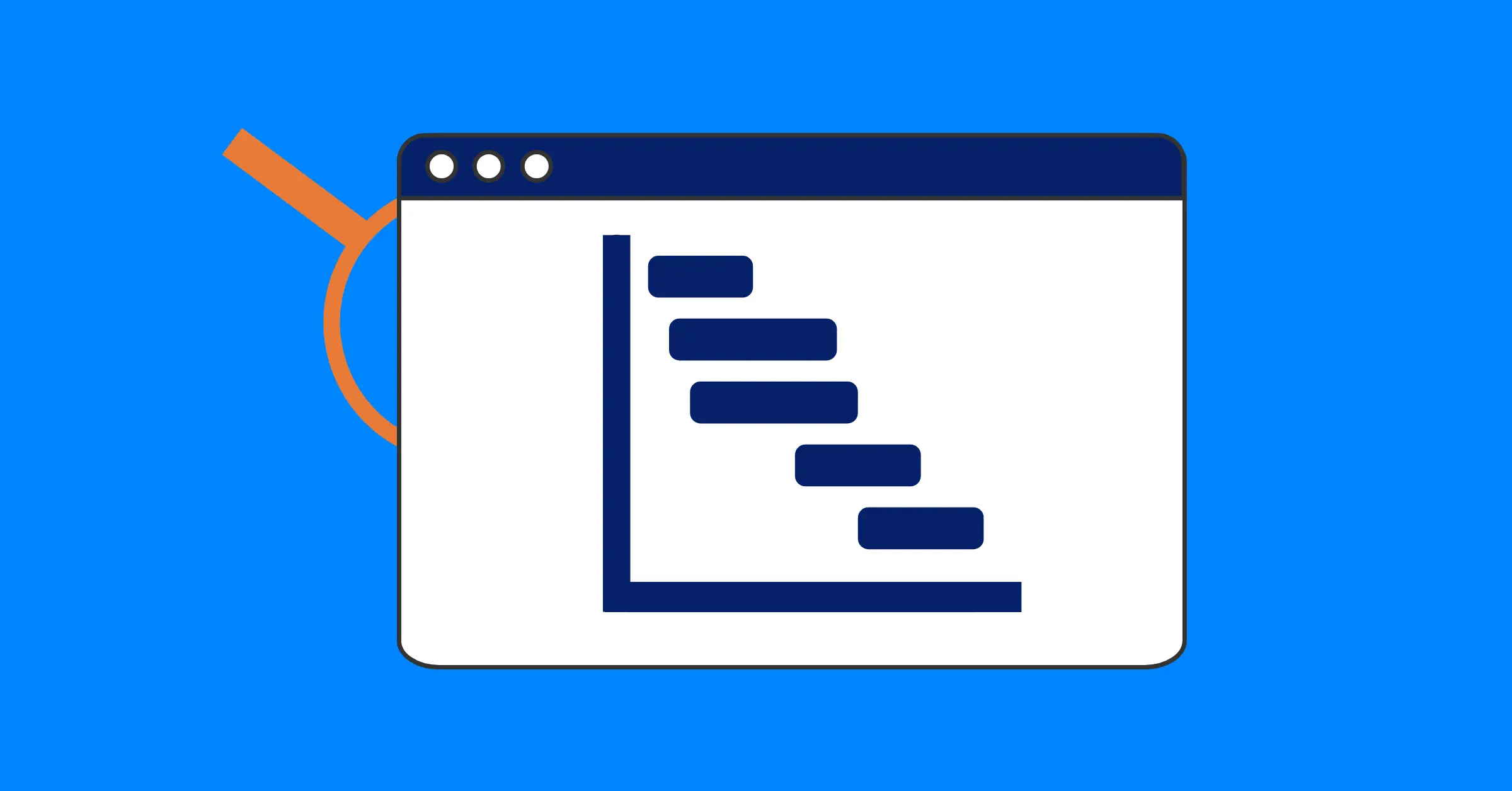A Full Breakdown of Kanban Project Management: All You Need To Know
Discover the power of Kanban project management and learn how to boost your team's productivity with this comprehensive guide.
Kanban project management has become a vital tool for teams aiming to organize tasks, enhance collaboration, and boost productivity across industries like software development, marketing, and beyond. Rooted in lean manufacturing, Kanban has evolved into a flexible framework that empowers teams to manage projects with clarity and efficiency.
This comprehensive guide explores Kanban’s principles, benefits, pros and cons, implementation steps, and real-world applications, with a focus on leveraging TaskFord’s Kanban board for optimal results. Whether you’re new to project management or refining your approach, this blog provides actionable insights to master Kanban.
What Is Project Management?
Project management involves planning, organizing, and overseeing tasks to achieve specific goals within defined timelines and budgets. It coordinates resources, schedules, and team efforts to deliver successful outcomes. In Kanban, project management emphasizes visualizing tasks, optimizing processes, and fostering continuous improvement.
For a deeper dive into project management essentials, check out our Project Management Guide
Understanding Kanban: Origins and Core Concepts
Kanban, derived from the Japanese word for "signboard," is a scheduling system developed by Toyota in the late 1940s to improve manufacturing efficiency, as detailed in Toyota's Production System Guide. Created by Taiichi Ohno, it used visual signals, often cards, to trigger the movement or production of materials only when needed, ensuring a just-in-time approach to inventory management. In the 2000s, David J. Anderson adapted Kanban for knowledge work, particularly software development, establishing it as a robust project management methodology.
Kanban is a visual system that prioritizes transparency, adaptability, and continuous improvement. Unlike rigid frameworks like Waterfall, it offers flexibility to handle shifting priorities while keeping progress visible. It rests on four foundational principles and six core practices, detailed below.
Kanban’s Four Foundational Principles
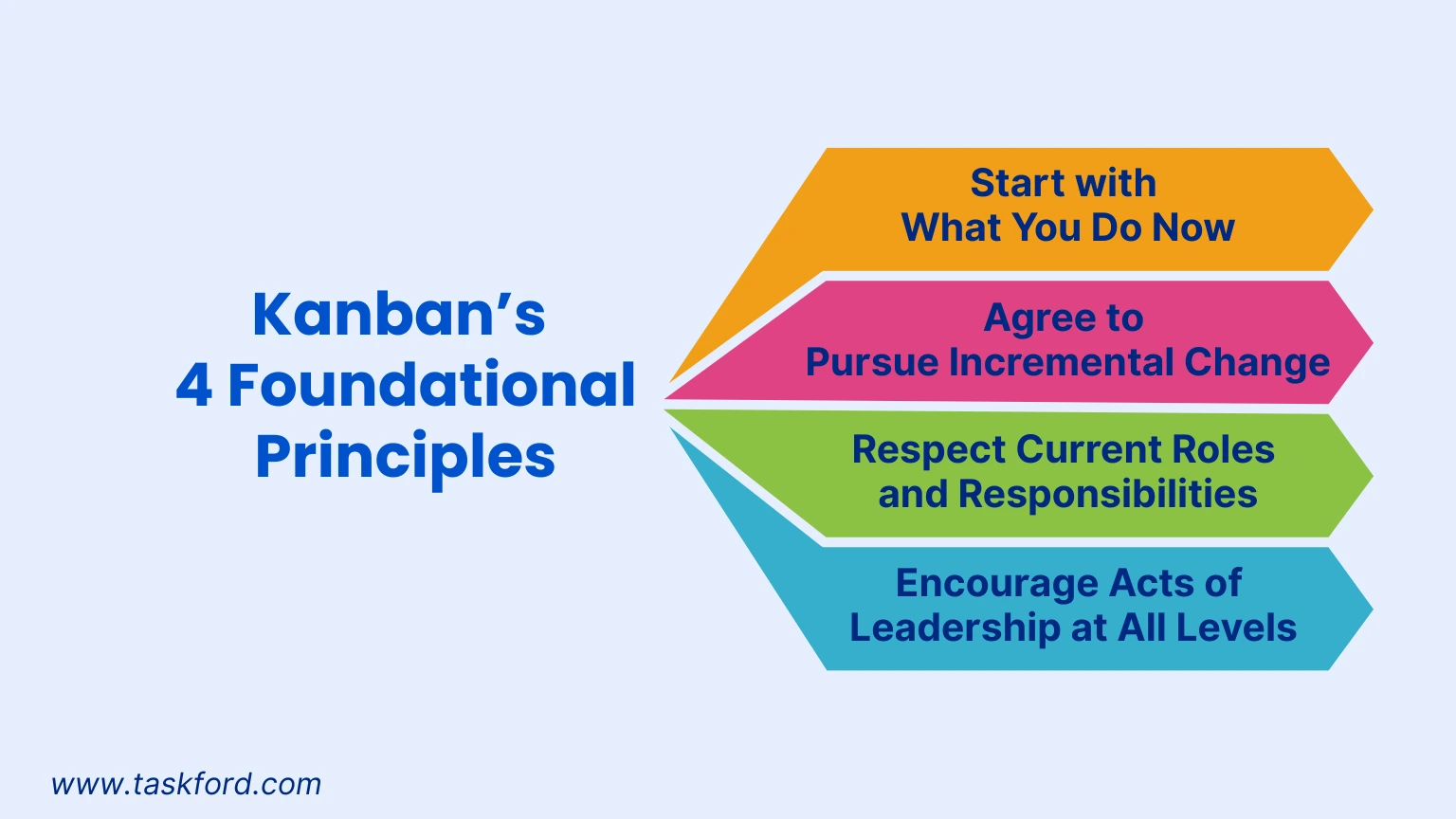
- Start with What You Do Now: Kanban builds on existing processes, allowing teams to adopt it without drastic changes, making it ideal for gradual improvement.
- Agree to Pursue Incremental Change: It focuses on small, continuous enhancements to boost efficiency without disruption.
- Respect Current Roles and Responsibilities: Kanban integrates with existing team structures, ensuring smooth adoption.
- Encourage Acts of Leadership at All Levels: It empowers all team members to propose improvements, fostering shared responsibility.
Kanban’s Six Core Practices
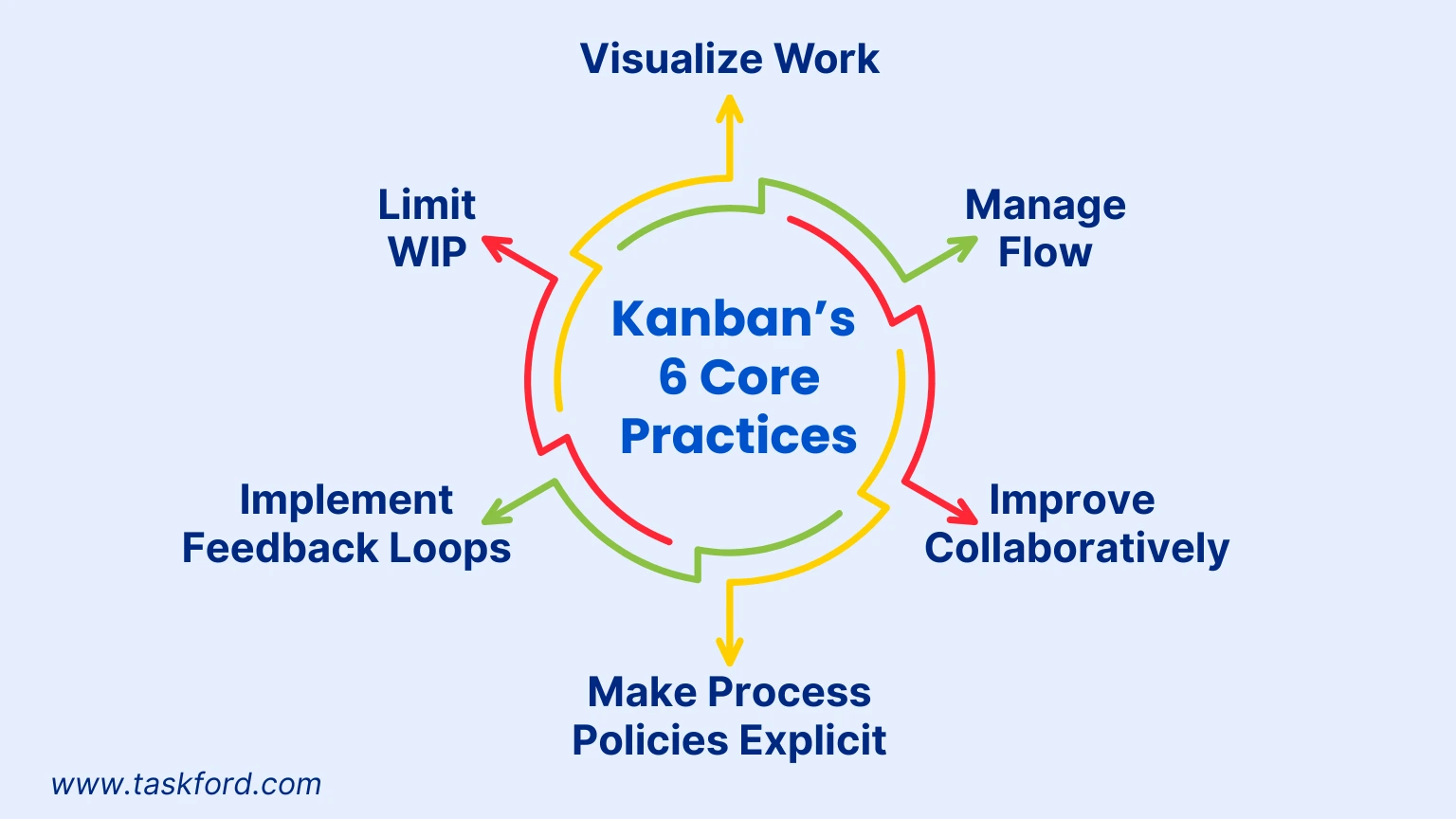
- Visualize Work: Use a Kanban board with cards and columns (e.g., To Do, In Progress, Done) to track tasks and spot bottlenecks.
- Limit Work in Progress (WIP): Cap tasks in progress to maintain focus and avoid overload.
- Manage Flow: Optimize task movement to minimize delays and enhance efficiency.
- Make Process Policies Explicit: Define clear rules for task progression, such as criteria for "Done."
- Implement Feedback Loops: Conduct regular reviews, like daily stand-ups, to assess and improve processes.
- Improve Collaboratively, Evolve Experimentally: Use data and team input to test and refine changes.
Benefits of Kanban Project Management
Kanban offers significant advantages for teams aiming to improve their project management practices. Below are key benefits with practical examples.
Enhanced Visibility and Transparency
A Kanban board provides a real-time view of project status, aligning team members and stakeholders. For instance, a marketing team can track campaign stages like ideation, design, and launch, ensuring everyone stays informed.
Improved Efficiency and Reduced Waste
Limiting WIP ensures teams complete tasks before starting new ones, reducing multitasking. A software team might cap developers at three tasks, ensuring coding, testing, and deployment are completed efficiently.
Flexibility to Adapt to Changing Priorities
Kanban’s adaptability allows teams to reprioritize tasks without disrupting the project. A product team can quickly address urgent customer feedback by reordering tasks on the board.
Continuous Improvement
Kanban uses metrics like cycle time (time to complete a task) and throughput (tasks completed in a period) to drive data-driven improvements, helping teams refine processes.
Better Team Collaboration
By visualizing work and encouraging daily discussions, Kanban fosters collaboration. Stand-up meetings around the board enable teams to share updates and resolve blockers, boosting accountability.
Pros and Cons of Kanban Project Management
Like any methodology, Kanban has strengths and limitations. Understanding these can help teams decide if it suits their needs and how to address potential challenges.
Pros of Kanban
- Flexibility: Kanban adapts to changing priorities, making it ideal for dynamic projects like software development or marketing campaigns.
- Improved Focus: WIP limits reduce multitasking, enabling teams to concentrate on completing tasks, which enhances productivity.
- Transparency: Visual boards provide clear visibility into task status, ensuring alignment across teams and stakeholders.
- Continuous Improvement: Regular feedback loops and metrics like cycle time drive incremental process enhancements.
- Ease of Adoption: Kanban builds on existing processes, requiring minimal restructuring and making it accessible for teams new to project management.
Cons of Kanban
- Lack of Structure: Kanban’s flexibility can be a drawback for projects requiring strict timelines or detailed planning, such as construction.
- Risk of Overloading: Without disciplined WIP limits, boards can become cluttered, leading to confusion and inefficiency.
- Dependence on Team Discipline: Kanban relies on team commitment to follow rules and update boards, which can falter without buy-in.
- Limited Long-Term Planning: Kanban focuses on immediate tasks, potentially overlooking strategic, long-term goals compared to methods like Gantt charts.
- Learning Curve for Metrics: Analyzing metrics like cycle time or throughput requires familiarity, which may challenge new users.
By leveraging tools like TaskFord or ClickUp and addressing these cons through training and clear policies, teams can maximize Kanban’s benefits while minimizing its drawbacks.
How to Implement Kanban Project Management
Implementing Kanban is straightforward but requires careful planning. Follow these steps to set up a Kanban system.
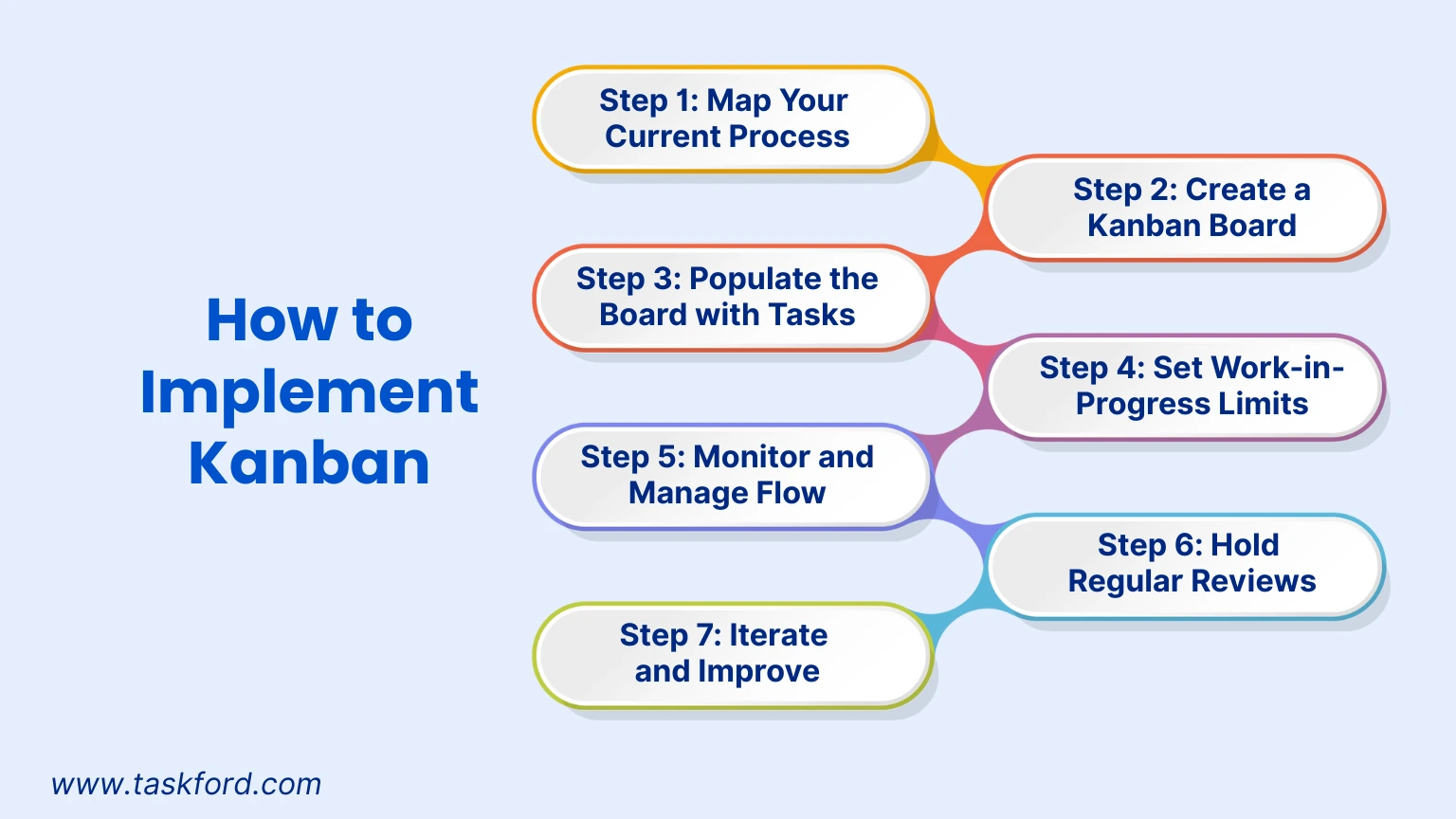
Step 1: Map Your Current Process
Document your existing process, identifying task stages from start to finish. For a content team, stages might include Ideation, Drafting, Editing, Approval, and Published. These become your Kanban board columns.
Step 2: Create a Kanban Board
Set up a physical or digital Kanban board. A Kanban board offers customizable columns and real-time collaboration. Create columns for each stage and add task cards with details like assignees and due dates.
Step 3: Populate the Board with Tasks
Add current tasks to the board, placing them in the correct columns based on status. Ensure cards include clear details, such as priorities or dependencies, to avoid confusion.
Step 4: Set Work-in-Progress Limits
Establish WIP limits for each column to prevent bottlenecks. For example, limit Editing to three tasks to maintain focus. Adjust limits based on team capacity and performance.
Step 5: Monitor and Manage Flow
Track task movement, using metrics like cycle time to identify delays. If tasks pile up in one stage, investigate causes, such as resource constraints, and address them.
Step 6: Hold Regular Reviews
Conduct daily stand-ups to discuss progress and blockers. Schedule weekly or biweekly retrospectives to evaluate the Kanban system and propose improvements.
Step 7: Iterate and Improve
Use feedback and metrics to refine your Kanban system. Experiment with changes, like adjusting WIP limits or adding columns, and measure their impact.
TaskFord’s Kanban Board
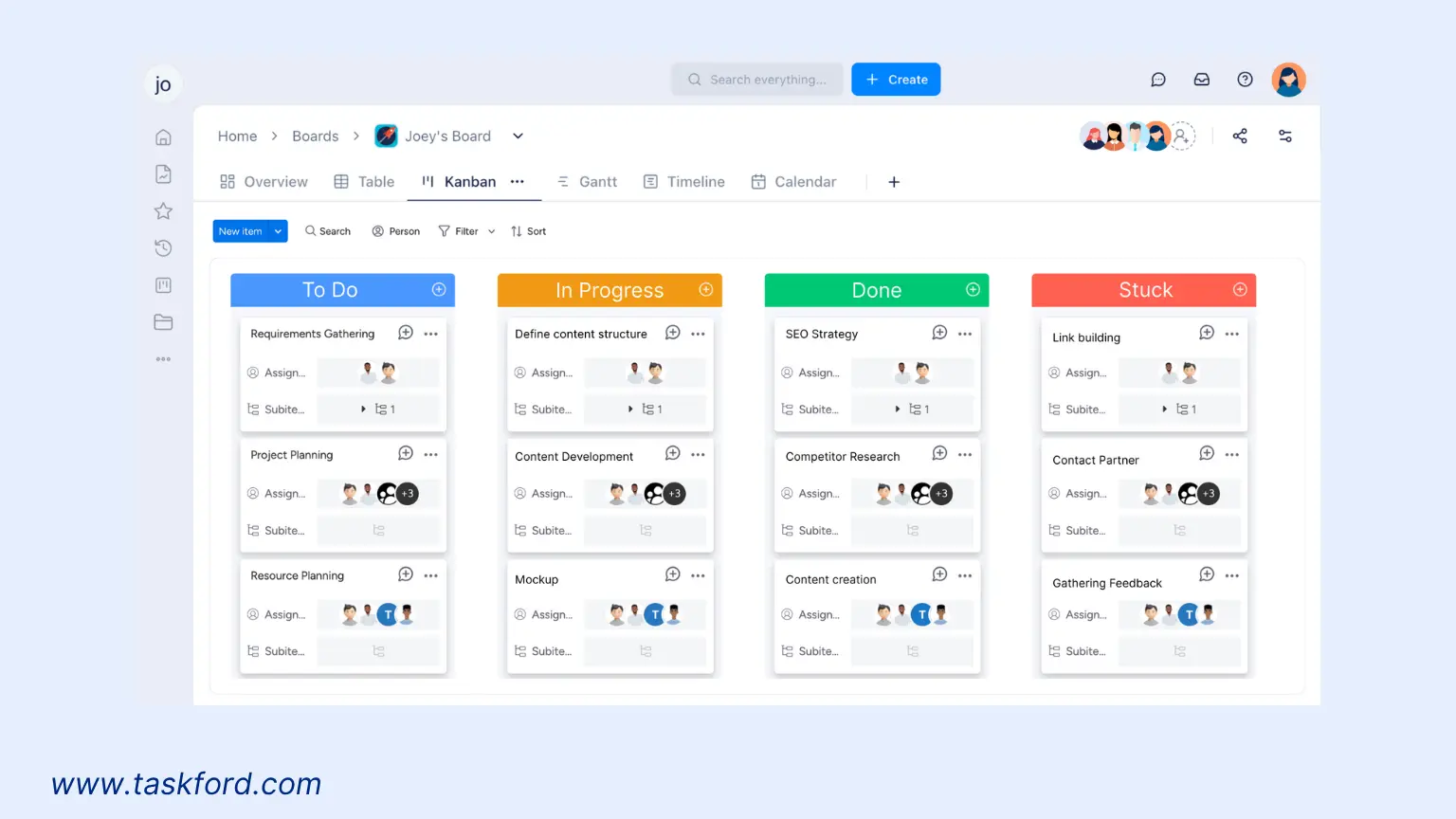
TaskFord is an advanced project management and resource planning platform that offers multiple features designed specifically to support Kanban project management, offering a clear, customizable, and collaborative platform for teams. Here’s how it enhances Kanban implementation:
- Customizable Boards: TaskFord allows teams to create Kanban boards tailored to their process, with columns like To Do, In Progress, and Done. Teams can drag and drop task cards to reflect real-time progress, ensuring clarity.
- Real-Time Collaboration: The board supports instant updates, enabling remote and in-office teams to stay aligned. Team members can assign tasks, set priorities, and add comments directly on cards, fostering clear communication.
- Detailed Task Cards: Each card can include descriptions, checklists, attachments, and due dates, centralizing all task information to reduce confusion and keep projects organized.
- Progress Tracking: Built-in analytics track metrics like cycle time and throughput, providing data to identify bottlenecks and optimize performance.
- Ease of Use: TaskFord’s clean, straightforward interface requires minimal training, allowing teams to adopt Kanban quickly, regardless of experience level.
TaskFord’s Kanban board is ideal for teams managing diverse projects, from software sprints to marketing campaigns, offering a focused solution for visualizing and managing tasks effectively.
Real-World Applications of Kanban
Kanban’s versatility suits various industries. Here are some examples:
Software Development: Agile teams use Kanban to manage sprints, track bugs, and prioritize features. Columns like To Do, In Progress, Done, and Stuck help visualize progress and address bottlenecks.
Marketing: Marketing teams manage campaigns, content creation, and social media schedules with Kanban.
Human Resources: HR teams apply Kanban to recruitment and onboarding. This will help them get a smoother and clearer workflow.
Common Challenges and How to Overcome Them
Kanban implementation can face hurdles, but solutions exist:
- Overloaded Boards: Too many tasks can clutter the board. Solution: Enforce WIP limits and archive completed tasks.
- Resistance to Adoption: Teams may resist Kanban. Solution: Offer training, highlight benefits, and involve the team in board setup.
- Unclear Policies: Vague task criteria cause confusion. Solution: Define explicit rules for each stage and ensure detailed task cards.
Kanban vs. Gantt Chart
Kanban and Gantt charts are both powerful project management tools, but they serve different purposes based on project needs. The following table highlights their key differences to help you choose the right tool for your team.
| Feature | Gantt Chart | Kanban Board |
|---|---|---|
| Best For | Large, structured projects with fixed deadlines (e.g., construction, event planning) | Agile workflows with continuous delivery (e.g., software development, customer support) |
| Workflow Type | Linear, phase-based | Flexible, iterative |
| Task Visualization | Timeline-based with dependencies | Card-based, drag-and-drop system |
| Flexibility | Rigid structure with predefined schedules | Highly adaptable with real-time updates |
| Collaboration | Best for teams working in sequential phases | Ideal for teams with concurrent tasks |
| Complexity | Can become overwhelming for large projects | Simple and intuitive, but lacks long-term planning features |
| Time Tracking | Includes milestone tracking & deadlines | Focuses on work-in-progress limits rather than deadlines |
| Best For Teams Like | Project managers, event planners, construction teams | Agile teams, developers, marketing teams |
For a deeper comparison of Kanban and Gantt charts, including pros, cons, and best use cases, read our detailed guide: Gantt Chart vs Kanban
Conclusion
Kanban project management offers a visual, adaptable, and collaborative approach to managing tasks and achieving project goals. By leveraging Kanban boards, limiting work in progress, and fostering continuous improvement, teams can enhance efficiency and deliver quality results. TaskFord’s Kanban board, with its customizable and user-friendly features, is a standout tool for teams across industries.
Ready to elevate your project management? Explore TaskFord's Kanban board and transform your team’s productivity today.
Learn more
- Agile Project Management - The Basics For Beginners
- Agile Project Management Sprint Cycle - From Planning to Retrospective
- Real-World Agile Project Management with Scrum - Lessons from the TaskFord Team
Making work simpler,
smarter, and more connected
Join our waitlist and be notified first.

Related Blog
Subscribe for Expert Tips
Unlock expert insights and stay ahead with TaskFord. Sign up now to receive valuable tips, strategies, and updates directly in your inbox.


